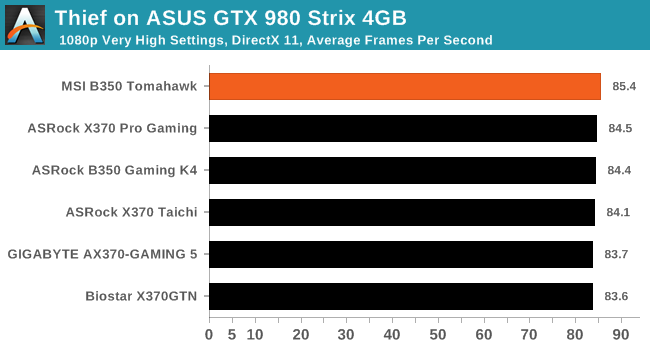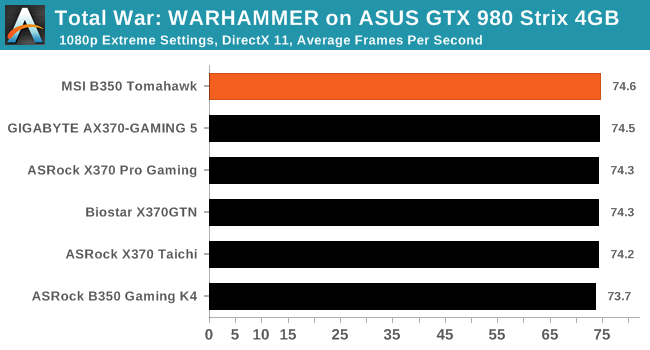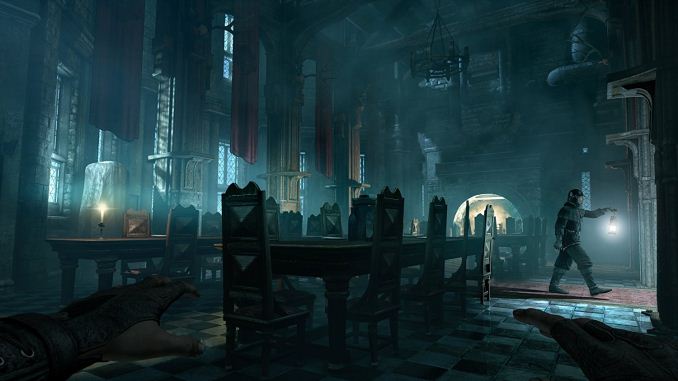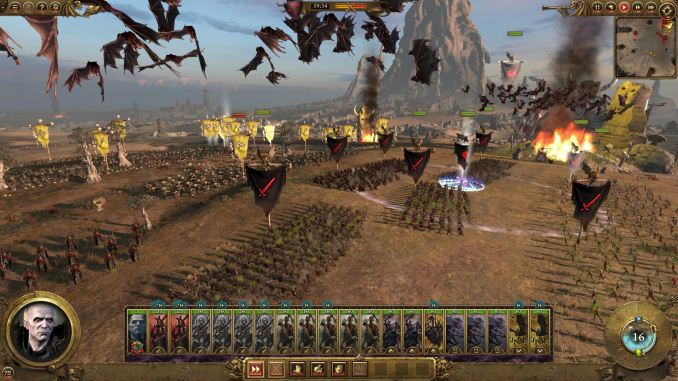The MSI B350 Tomahawk Motherboard Review: Gaming On a Budget
by Gavin Bonshor on March 12, 2018 10:45 AM EST- Posted in
- Motherboards
- AMD
- MSI
- ATX
- Zen
- AM4
- B350
- Ryzen
- Tomahawk
- Raven Ridge
Gaming Performance
Ashes of the Singularity
Seen as the holy child of DirectX12, Ashes of the Singularity (AoTS, or just Ashes) has been the first title to actively go explore as many of DirectX12s features as it possibly can. Stardock, the developer behind the Nitrous engine which powers the game, has ensured that the real-time strategy title takes advantage of multiple cores and multiple graphics cards, in as many configurations as possible.

Rise Of The Tomb Raider
Rise of the Tomb Raider is a third-person action-adventure game that features similar gameplay found in 2013's Tomb Raider. Players control Lara Croft through various environments, battling enemies, and completing puzzle platforming sections, while using improvised weapons and gadgets in order to progress through the story.
One of the unique aspects of this benchmark is that it’s actually the average of 3 sub-benchmarks that fly through different environments, which keeps the benchmark from being too weighted towards a GPU’s performance characteristics under any one scene.

Thief
Thief has been a long-standing title in PC gamers hearts since the introduction of the very first iteration which was released back in 1998 (Thief: The Dark Project). Thief as it is simply known rebooted the long-standing series and renowned publisher Square Enix took over the task from where Eidos Interactive left off back in 2004. The game itself utilises the fluid Unreal Engine 3 engine and is known for optimised and improved destructible environments, large crowd simulation and soft body dynamics.

Total War: WARHAMMER
Not only is the Total War franchise one of the most popular real-time tactical strategy titles of all time, but Sega delve into multiple worlds such as the Roman Empire, Napoleonic era and even Attila the Hun, but more recently they nosedived into the world of Games Workshop via the WARHAMMER series. Developers Creative Assembly have used their latest RTS battle title with the much talked about DirectX 12 API so that this title can benefit from all the associated features that comes with it. The game itself is very CPU intensive and is capable of pushing any top end system to their limits.















46 Comments
View All Comments
vkristof - Tuesday, March 13, 2018 - link
yeah: this has been driving me nuts.Many B350 motherboards do not list the full complement of TWO (2) USB 3.1 Gen ports that AMD states the chipset/FCH/whatever provides. Are there additional components that have to be added to the B350 to get the Gen2 speed to work?
unlockproject - Monday, August 1, 2022 - link
sometimes windowless chttp://sharepoint.bath.k12.va.us/tech/forum/Lists/...
Tsavo - Monday, March 12, 2018 - link
I have the Krait version of this. It takes forever (15s) to POST. Latest BIOS doesn't fix it, either.Other than that massive clanger, it's an ok board, but I'd certainly not recommend any AMD based MSI board based upon the long POST time.
artifex - Monday, March 12, 2018 - link
My MSI 970a-g43 (AM3+) hits the Windows login screen in about 5 seconds.I wonder what's happened between then and now, design-wise? Especially since mine's not a "gaming" board and I got it for about $30-40.
kepstin - Monday, March 12, 2018 - link
The change to DDR 4 ram hurt motherboard post times a fair bit. And the am4 boards, particularly with early bioses, might put you into a slow ram setup retry loop.That said, with the latest (1.C) bios on my tomahawk, and with Windows whql mode enabled (turns off legacy boot), I have nothing to complain about with post speed.
Tsavo - Monday, March 12, 2018 - link
I think you may be on to something here. I've been poking around, and found out that the BIOS of my GTX 660 doesn't support UEFI fast boot. I emailed EVGA for an updated version that supports it.Dollars to donuts, the UEFI bios is looking for signed devices and takes a long time to do it if it comes across ones that aren't.
artifex - Monday, March 12, 2018 - link
Yikes. Guess I should be looking for an update to that situation when the 450/470-based boards come out, before deciding to upgrade.TrackSmart - Monday, March 12, 2018 - link
Why the long post times for all of these modern motherboards? I thought my Ryzen motherboard was just poorly optimized (about 20 seconds to post; Also 20 seconds to wake from sleep). But it looks like this is one area where desktop motherboards have *not* improved performance-wise in the past 8 years.My 2010-era AMD system posts faster than my new Ryzen build. And it wakes from sleep in about 4-5 seconds instead of ~20 seconds. That is after all efforts to streamline the post times. My ~1 second improvement in post time mirrors the difference between "stripped" and "default" in this article, so I'm guessing that there's not a lot of improvement to be had, short of optimizations from the motherboard manufacturer themselves (ASUS in my case).
silverblue - Wednesday, March 14, 2018 - link
My Gigabyte GA-AB350 Gaming 3 has three Fast BIOS speed settings - Disabled, Enabled and Ultra Fast. The latter doesn't even show the BIOS before you get the Windows 10 logo, not a massive issue if you're happy with the APP Center within Windows instead of being able to go the BIOS directly.silverblue - Wednesday, March 14, 2018 - link
Yep, 9 seconds from on to Windows 10 logo, and another 5 to login screen. About 5 seconds from sleep (though some of that is the display turning back on). I should also explain that I have a Samsung 850 Evo 250GB as my boot drive, and that I'm running a Ryzen 5 1600 with 16GB DDR4 3000 CL16.